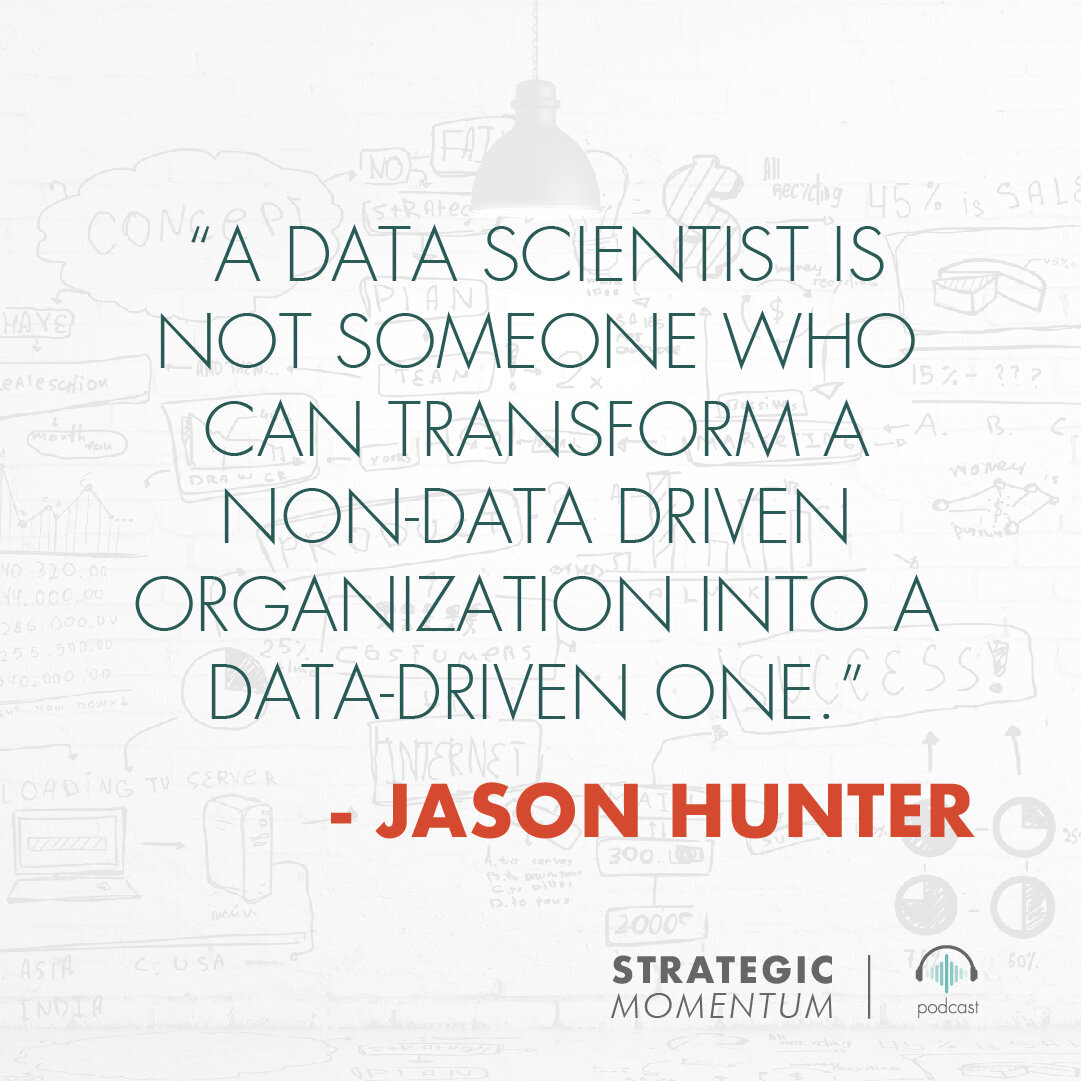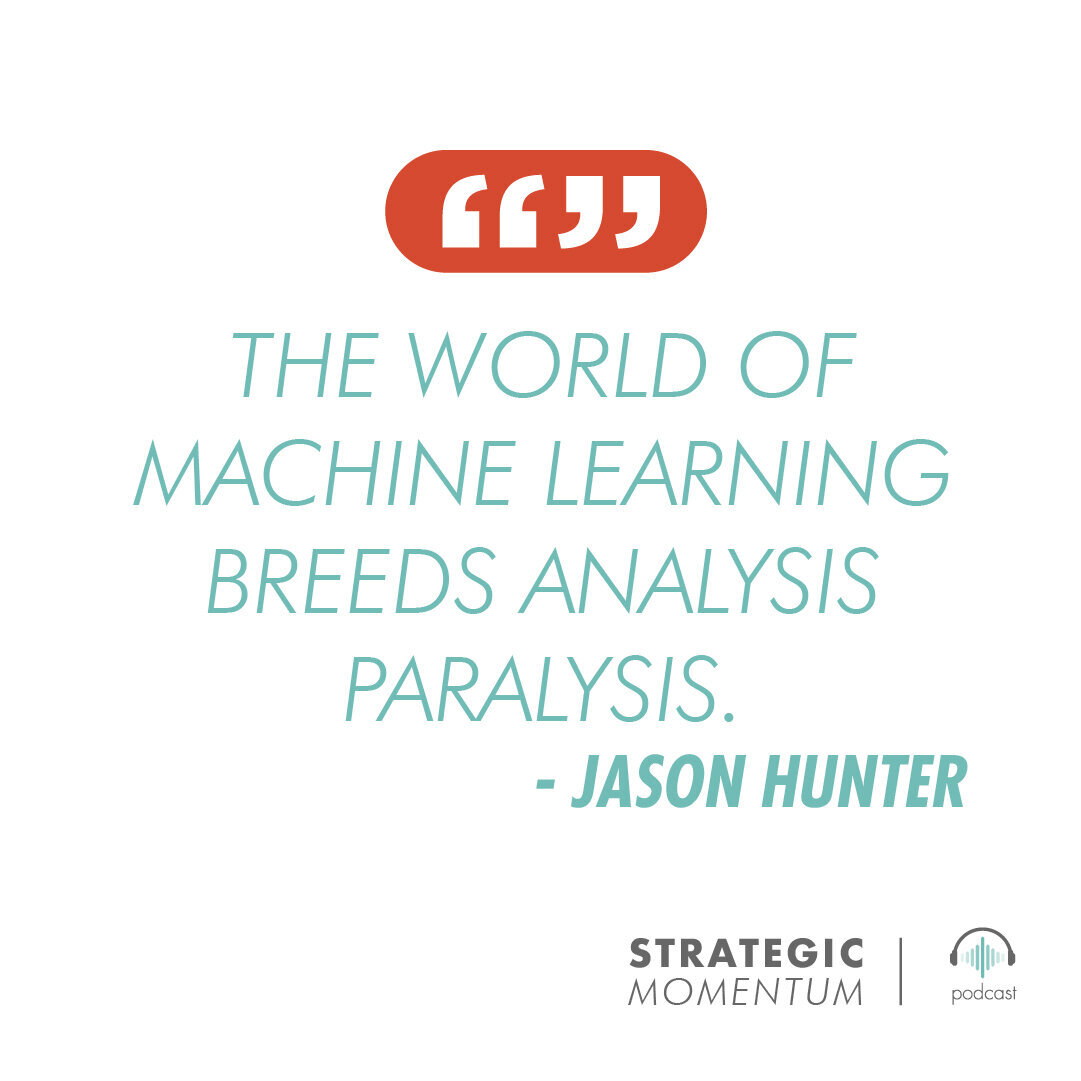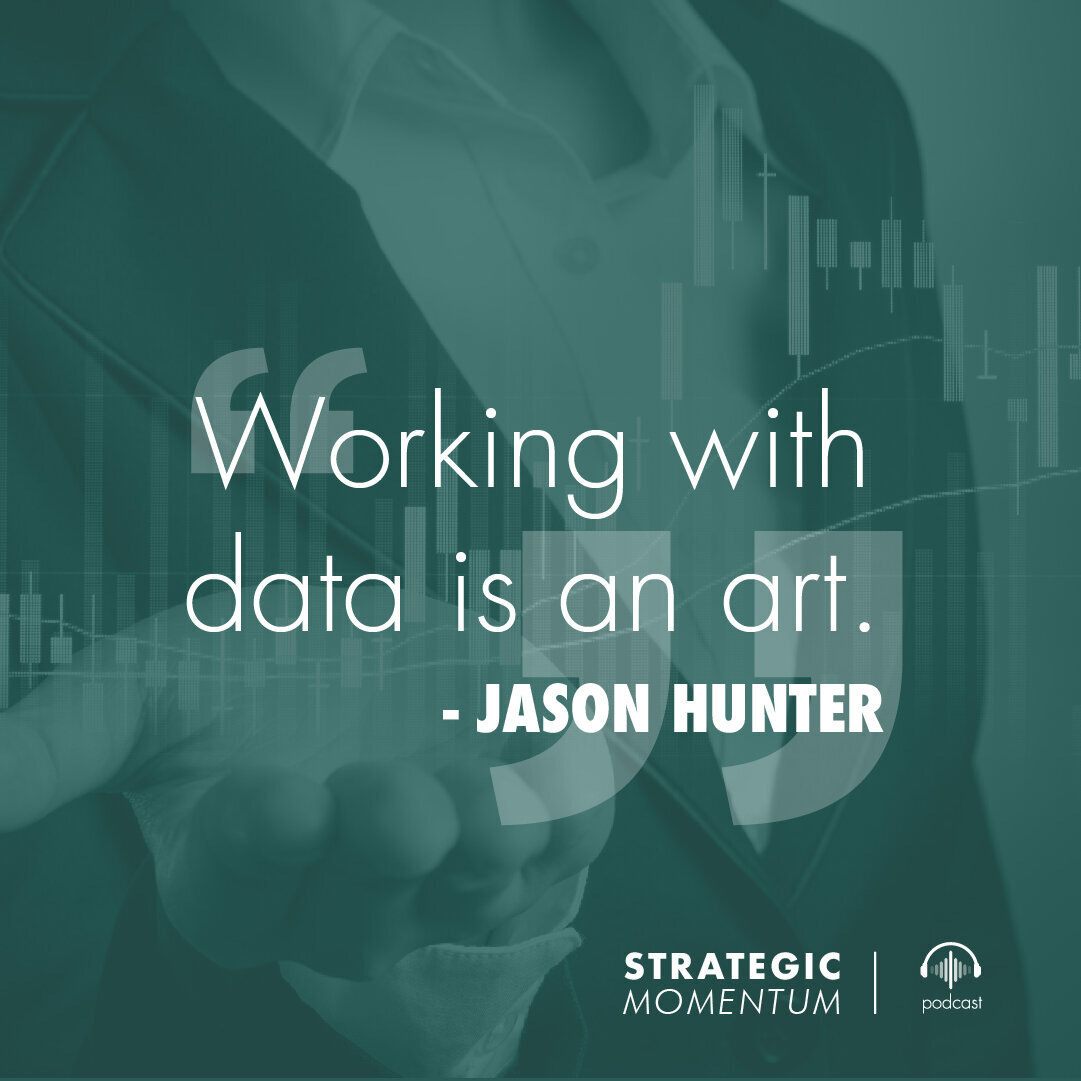Ep. 13 - Machine Learning: How to Implement It & Drive Business Momentum
Find Us Wherever You Listen To Podcasts
Jason Hunter is the Data Science business lead for CapTech consulting and, for 15 years, he has been using data to help businesses drive impact.
Now, with the advent of machine learning, he sees the world of businesses analysis changing forever as organizations gain the ability to truly look at their data.
Data Science & Machine Learning 101
The data science game has always been the same: collect data, manipulate it, and translate that into a metric or model that will help businesses drive impact.
So why all the fuss about machine learning and data science now?
Put simply: more power. A lot more power.
While the algorithms and statistical processes being used today have been around for decades, the speed at which we can perform those processes is increasing dramatically. An algorithm can now be optimized by running a million adaptive statistical models over and over until they converge on that perfect equation to predict customer response, as an example.
So you can think of machine learning as using this massive computing power combined with advanced algorithms to automate the execution of existing statistical processes – it is the evolution of statistics in business.
How are businesses using Machine Learning to drive impact today?
Retail and e-commerce organizations (like Amazon) use data to personalize product offers. They can discover related customer interests and then create location-specific offers.
Some companies use machine learning and internal data to learn about employees and optimize business workflows.
Travel and media companies are using data to create traded content for their buyers.
Many companies are jumping into real-time advertising, and those companies are purchasing tools that incrementally serve and predict a path, or predict and serve a path in real time.
Healthcare organizations use machine learning to identify risk factors and physician fraud.
Machine Learning Myths & Challenges
Because the business impact from leveraging machine learning can be so powerful, many companies are trying to take advantage of it – but hiring one data scientist to effectively implement this capability in your organization isn’t the solution.
To leverage your organization’s data, there needs to be a holistic understanding of how the specific business functions, where data comes from for that business, and the statistical processes that can be used to create an effective model – and that’s a lot to ask out of one person.
There needs to be a holistic understanding of which business functions require machine learning and the data needs around them. It also involves determining where data comes from for that business, and the statistical processes that can be used to create an effective model – and that’s a lot to ask out of one person.
There are other challenges, too:
Businesses put way too much emphasis on the acquisition of machine learning technologies and tools, and not enough focus on the actual organization of physical data. A machine learning tool, without good data, won’t do anything but cost money.
Many organizations (especially governmental ones) put silos around their data, which makes it difficult to leverage the speed of machine learning.
Machine learning breeds analysis paralysis. There are a lot of tools and statistical processes to consider, and more companies are jumping into the machine learning space every day.
No tool or person can solve your problem alone – you first need a data strategy!
Key Takeaways
Machine learning is really the evolution of statistics in business, and more specifically predictive modeling. It is using increasingly-accessible computing power combined with advanced algorithms to automate the execution of existing statistical processes.
A data scientist can be very skillful, and a machine learning tool can be very powerful, but no external person or tool can transform a non-data driven organization into a data-driven one.
The zero step to a good Data Strategy is resisting the urge to hire a data scientist or purchase a tool. If you don't know how your data is being used across the organization, and which components of the organization can use those tools, you're going to end up with a bigger problem than you started with.
To set your organization up for success with data, you need to examine the entire organization, document everything, and create a top-down data strategy:
Identify all of the business functions that need machine learning or data science.
Determine the high-level data needs of those business functions themselves.
Link the need to metrics and look at the relationship between all of those items – you'll immediately see where areas of overlap exist in reporting and data needs.
Once you document these relationships in a systematic and networked fashion, you can go bottom-up and start connecting the right data sources and relevant applications with those needs.
Finally, you can begin the planning process around which tool you might need to enable machine learning. The key ingredient is that your C-suite has to be involved at all stages of the process to create a common foundation for understanding the business through identifying the right metrics from the beginning.
DOWNLOAD THE EBOOK
Get the key insights and advice from this episode in a PDF presentation.
Resources:
Learn more at CapTechConsulting.com
Connect with Jason on LinkedIn












